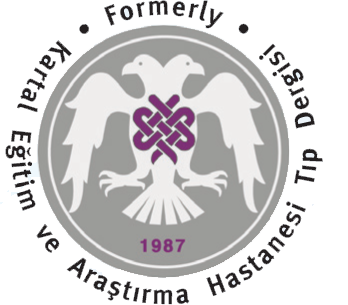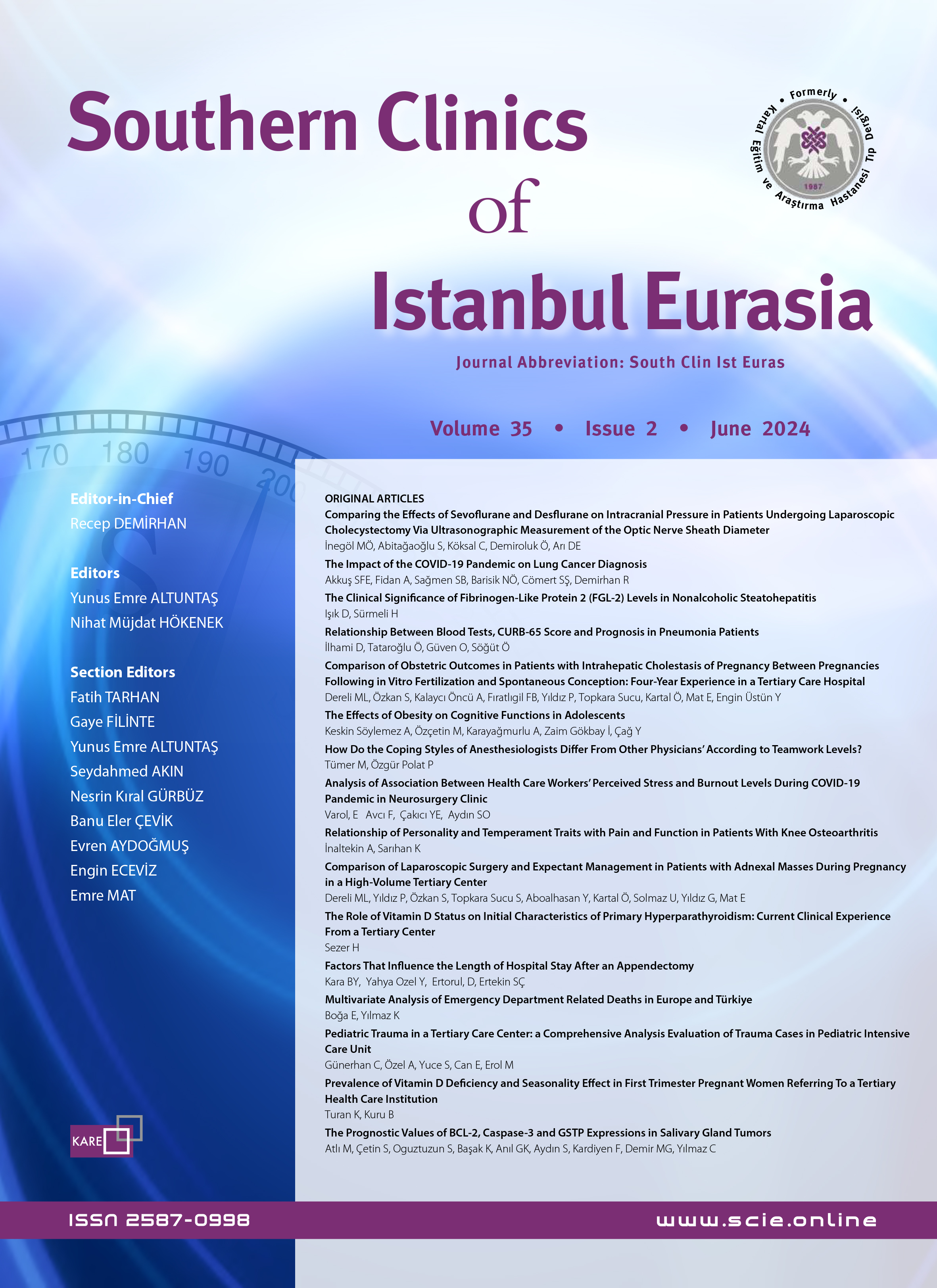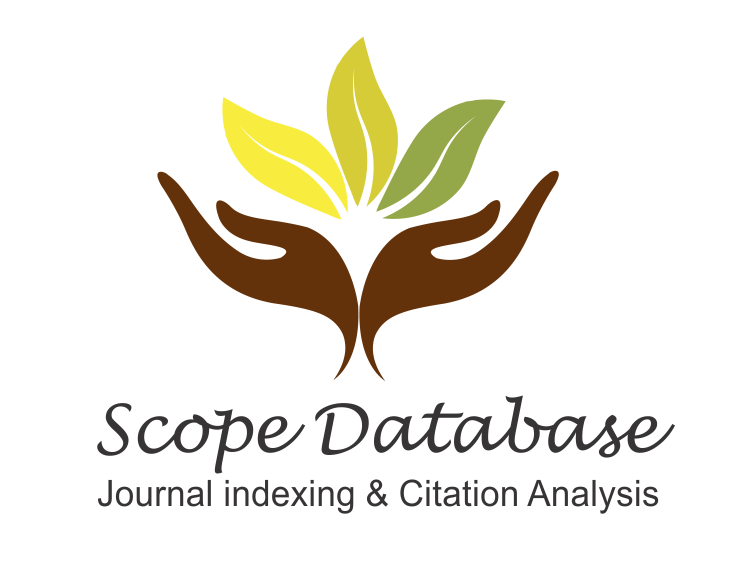Natural History of Cervical Intraepithelial Neoplasia During Antepartum and Postpartum Periods in Pregnant Women with High-Risk HPV Positivity and Abnormal Cervical Cytology
İlkan Kayar1, Ferhat Çetin2, Özer Birge31Department of Obstetrics and Gynecology, Osmaniye State Hospital, Osmaniye, Türkiye2Department of Obstetrics and Gynecology, Private Osmaniye Park Hospital, Osmaniye, Türkiye
3Department of Gynecological Oncology, Eskisehir City Hospital, Eskisehir, Türkiye
INTRODUCTION: The colposcopic evaluation of the high-risk human papillomavirus positive and abnormal cervical cytological test results from cervix uteri cancer screening tests taken during pregnancy and comparison of the cytological and histopathological results in the antenatal and postpartum periods were aimed.
METHODS: The study included 32 pregnant women over the age of 25 who had HPV positive and abnormal cytological results in cervix uteri cancer screening tests conducted during routine antenatal follow-ups between 2022-2025. Our study includes cases of women who presented during pregnancy, where HPV and cervicovaginal smear tests were conducted during the initial assessment and whose results showed high-risk HPV positive and/or abnormal cytological changes.
RESULTS: Upon examination of the overall results of our study. According to the smear cytology conducted at the 6th month postpartum, the NILM or healing rates were higher in the group without dysplasia compared to the group with dysplasia, 46% versus 11%, and a statistically significant difference was observed between the two groups (p: 0.038). When the colposcopic evaluation and biopsy results conducted at the 6th week postpartum were compared with the colposcopic evaluation and biopsy results taken during the antenatal period, it was observed that 9% of all cases progressed, 63% persisted, and 28% regressed. Upon examining the impact of the delivery method on histopathological results and associated rates, it was observed that there were regression rates of 38% in 6 cases in normal spontaneous vaginal delivery and 19% in 3 cases in caesarean delivery, and that the regression rates after normal delivery were significantly high.
DISCUSSION AND CONCLUSION: Based on the results of high-risk HPV positivity and/or abnormal cytological tests conducted during pregnancy, alongside colposcopic evaluation, only conservative approach during pregnancy and a colposcopy and biopsy approach in the postpartum period are readily implementable.
Yüksek Riskli HPV Pozitifliği ve Anormal Servikal Sitolojisi Olan Gebe Kadınlarda Antepartum ve Postpartum Dönemde Servikal İntraepitelyal Neoplazinin Doğal Seyri
İlkan Kayar1, Ferhat Çetin2, Özer Birge312
3
GİRİŞ ve AMAÇ: Gebelik sürecinde alınan serviks uteri kanser tarama testlerinden yüksek riskli human papillomavirüs (HPV) pozitif ve anormal servikal sitolojik testi (CVS) sonuçlarının kolposkopik değerlendirmesi ve antenatal ve postpartum dönemde sitolojik ve histopatolojik sonuçlarının karşılaştırılması amaçlandı.
YÖNTEM ve GEREÇLER: 2022-2025 yılları arasında rutin antenatal takiplerinde alınan serviks uteri kanser tarama testlerinde HPV pozitif ve anormal sitolojik sonuçları olan 25 yaş üzeri 32 gebe çalışmaya dahil edildi. Çalışmamız gebelik sürecinde başvuran kadınlardan ilk muayenede HPV ve servikovajinal smear testi alınan ve sonuçlarında high risk HPV pozitif ve/veya anormal sitolojik değişiklikler olan olgulardan oluşmaktadır.
BULGULAR: Çalışmamızın genel sonuçlarına bakıldığında; postpartum 6. ayda alınan smear sitolojisine göre displazi izlenmeyen grupta displazi izlenen gruba göre NILM (Negative intraepitelyal lezyon veya malignite) yani iyileşme oranlarının %46 ya karşılık %11 gibi daha yüksek olduğu ve iki grup arasında istatistiksel anlamlı farklılık izlendi (p=0.038). Postpartum 6. haftada yapılan kolposkopik değerlendirme ve alınan biyopsi sonuçlarının antenatal dönemde yapılan kolposkopik değerlendirme ve biyopsi sonuçları ile arşılaştırıldığında; tüm olguların %9unun progrese, %63ünün persiste kaldığı ve %28inin ise regrese oldukları izlendi. Özellikle doğum şeklinin histopatolojik sonuçlara etkisi ve buna bağlı oranlara bakıldığında ise normal spontan vajinal doğumda 6 olguda %38 ve sezaryen doğumda ise 3 olgu %19 oranında regresyon oranlarını olduğu ve normal doğum sonrası regresyon oranlarının anlamlı yüksek olduğu görüldü.
TARTIŞMA ve SONUÇ: Gebelik sürecinde alınan ve yüksek risk HPV pozitif ve/veya anormal sitolojik test sonuçlarına göre olgulara kolposkopik değerlendirilmesinin yanı sıra gebelik sürecinde sadece konservatif yaklaşım ve postpartum dönemde kolposkopi ve biyopsi yaklaşımı rahatlıkla yapılabilir.
Manuscript Language: English




















